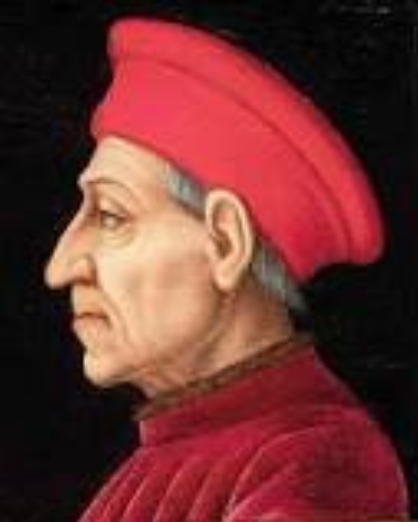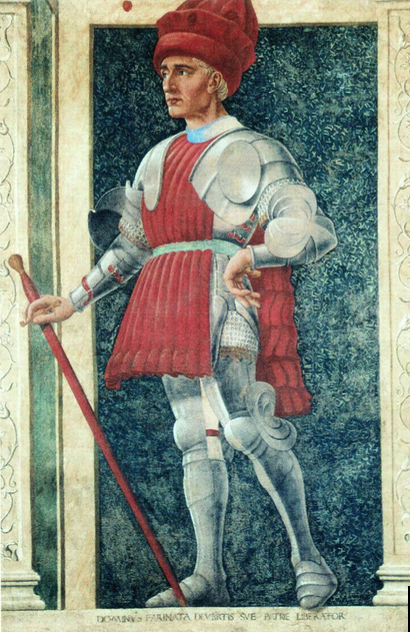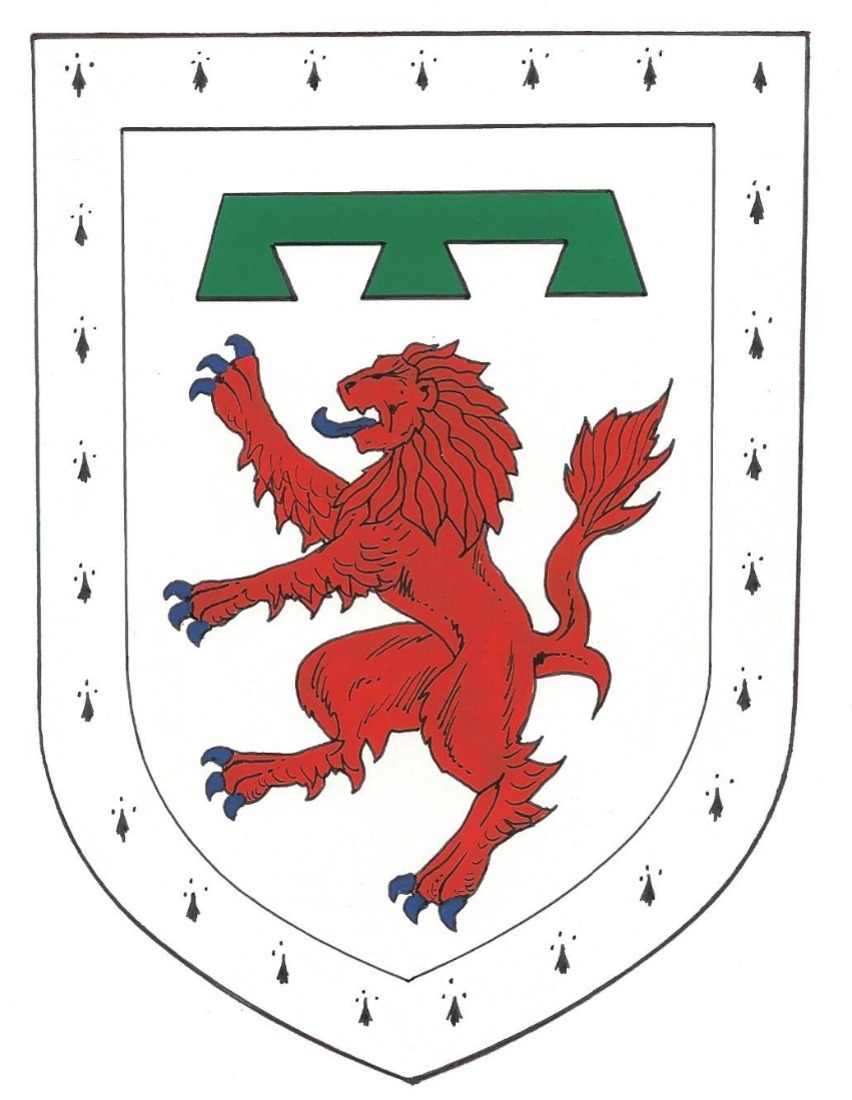Cosimo de Medici
Banker & Paymaster 1439-1480


Cosimo di Giovanni de' Medici, (i) called "the Elder" (Italian: il Vecchio) and posthumously "Father of the Fatherland" (Latin: pater patriae) (27 September 1389 – 1 August 1464), was an Italian banker and politician, the first member of the Medici family which effectively ruled Florence during much of the Italian Renaissance was the elder and founder of the House of Medici, later Dukes of Florence and Grand Dukes of Tuscany was connected to both the Sforza`s and the d `Estes.
In Florence the struggle for power between rival families was intense and Cosimo was expelled from the city in 1433 before returning and triumphing over his rivals in 1434.
The basis of his wealth was the highly successful Medici bank. Cosimo de' Medici used his vast fortune to control the Florentine political system and to sponsor orators, poets and philosophers, (ii) as well as a series of artistic accomplishments. A keen patron of the arts he also undertook the building of the family palace, now known as Palazzo Medici Riccardi which was designed by Michelozzo. (iii)
Cosimo de Medici was the employer of such artists as Donaletto and Uccello and his interest in ancient manuscripts and Byzantine esoterica was through the encouragement of Rene de Anjou, Sovereign of the Order of the Fleur De Lys who also fostered the transplantation of Italian Renaissance thought in his own dominions.
He financed trips to nearly every European town as well as to Syria, Egypt, and Greece organized by Poggio Bracciolini, his chief book scout." (iv) He engaged 45 copyists under the bookseller Vespasiano da Bisticci to transcribe manuscripts and paid off the debts of Niccolò de' Niccoli after his death in exchange for control over his collection of some 800 manuscripts valued at around 6,000 florins. (v)
Cosimo de Medici sent Francesco Sforza, Sovereign Grand Commander of the Order of the Fleur de Lys 1480-1485, to establish himself in Milan to prevent an impending military advance from the Republic of Venice. Francesco Sforza was a condottiere. Condottiere was the name given Italian captains who contracted to command mercenary companies during the Middle Ages. They notably served European monarchs and Popes during the Italian Wars of the Renaissance and the European Wars of Religion
The term condottiero in medieval Italian originally meant "contractor", given that the Condotta was the contract by which the condottieri put themselves in the service of a city or of a lord, but became a synonym of "military leader" during the Renaissance and Reformation era. Some authors have described Napoleon Bonaparte (in virtue of his Italian origins) as the "last condottiero".
The condottiero Francesco Sforza, who became the second Sovereign Grand Commander of the Order of the Fleur de Lys after Rene I King of Jerusalem and the 2 Sicilies was a mercenary soldier who had stolen land from the papacy and proclaimed himself its lord. He had yearned to establish himself at Milan as well, an ambition that was aided by the fact that the current Visconti head lacked legitimate children save for a daughter, Bianca, whom Sforza ultimately married in November 1441 after a failed attempt at winning her hand from her father.
The resultant balance of power with Milan and Florence on the one side and Venice and the Kingdom of Naples on the other created nearly half a century of peace that enabled the development of the Renaissance in Italy. However, despite the benefits to Florence from keeping Venice at bay, the intervention in Milan was unpopular among Cosimo de Medici’s fellow citizens, primarily because they were called upon to finance the Sforza succession. The Milanese made a brief attempt at democracy before Sforza was finally acclaimed Duke by the city in February 1450.
To explain the need for Mercenary Soldiers, Machiavelli, the Italian Renaissance diplomat, philosopher and writer, observed:
“None of the principal states were armed with their own proper forces. Thus, the arms of Italy were either in the hands of the lesser princes, or of men who possessed no state; for the minor princes did not adopt the practice of arms from any desire of glory, but for the acquisition of either property or safety. The others (those who possessed no state) being bred to arms from their infancy, were acquainted with no other art, and pursued war for emolument, or to confer honour upon themselves.”

Financing a mercenary force was expensive and in the 14th Century a soldier's pay was high and had to be funded through the Medici Bank: 6,600 monthly florins was paid in 1448 to William VIII of Montferrat, by Francesco Sforza and the enlisted soldier's pay was 3,300 florins, which was half that of an officer's.
"[Cosimo was] the father of a line of princes, whose name and age are almost synonymous with the restoration of learning; his credit was ennobled into fame; his riches were dedicated to the service of mankind; he corresponded at once with Cairo and London; and a cargo of Indian spices and Greek books were often imported in the same vessel." (vi)
i) Martines, Lauro (2011). The Social World of the Florentine Humanists, 1390–1460. University of Toronto Press. p. 8.
ii) Thomas, Joseph (29 April 1896). "Universal Pronouncing Dictionary of Biography and Mythology
iii) Meehan, William F. (2007). "The Importance of Cosimo de Medici in Library History". Indiana Libraries Vol. 26 Number 3.
iv) Meehan, William F. (2007). "The Importance of Cosimo de Medici in Library History". Indiana Libraries Vol. 26 Number 3
v) Durant, Will (1953). The Renaissance. The Story of Civilization. 5. New York: Simon and Schuster. pp. 76–77.
vi) Edward Gibbon (1880). The History of the Decline and Fall of the Roman Empire. Philadelphia: Nottingham Society. pp. 456–457

























